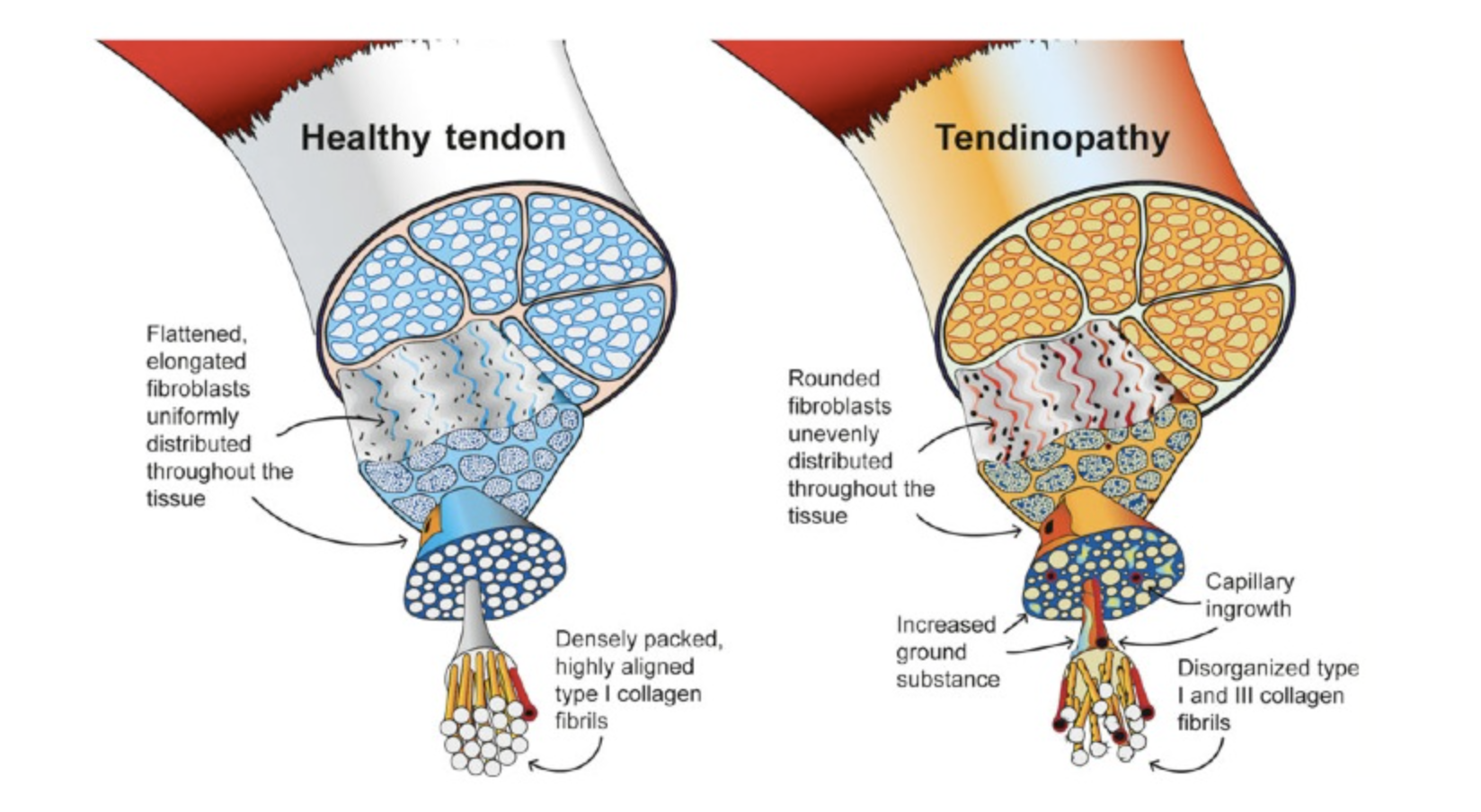Tendinopathy is a term that may sound complex, but it's a condition that many of us have heard of or even experienced without fully understanding what it entails. Whether you're an athlete dealing with a nagging injury or someone who occasionally experiences tendon pain, it's crucial to have a clear understanding of tendinopathy. In this blog post, we'll break down the concept of tendinopathy, exploring its causes, symptoms, and potential treatments.
What is Tendinopathy?
Tendinopathy is a broad term used to describe conditions that affect tendons, the tough, fibrous tissues that connect muscles to bones. Tendons play a crucial role in facilitating movement by transmitting the force generated by muscles to the bones they're attached to. When tendons become damaged or degenerated, it can lead to pain, reduced mobility, and functional limitations.
Types of Tendinopathy
Tendinopathy is an umbrella term that encompasses several specific conditions, including:
- Tendinitis: This refers to the inflammation of a tendon. It's typically caused by overuse or repetitive stress on the tendon and often presents as acute pain and swelling. Common examples include Achilles tendinitis and tennis elbow.
- Tendinosis: Unlike tendinitis, tendinosis is a chronic condition characterized by degeneration of the tendon's collagen fibers. It's often the result of long-term wear and tear, without significant inflammation. Tendinosis tends to cause pain and stiffness and can take longer to heal compared to tendinitis.
- Paratenonitis: This condition involves inflammation of the paratenon, a sheath that surrounds some tendons. It's commonly seen in the Achilles tendon and can result in pain and swelling around the affected area.
- Insertional Tendinopathy: Here, the inflammation or degeneration occurs at the point where the tendon attaches to the bone. It's often associated with conditions like rotator cuff tendinopathy or patellar tendinopathy.
Causes of Tendinopathy
Understanding the causes of tendinopathy is crucial for prevention and management. Common contributing factors include:
- Overuse: Repetitive movements and excessive strain on a tendon, especially in sports or work-related activities, can lead to tendinopathy.
- Aging: Tendons naturally degenerate as we age, making older individuals more susceptible to tendinopathy.
- Poor Biomechanics: Abnormal joint mechanics or muscle imbalances can place additional stress on tendons.
- Inadequate Rest and Recovery: Not giving your body enough time to heal after strenuous activities can increase the risk of tendinopathy.
- Medical Conditions: Certain medical conditions, like diabetes and autoimmune disorders, can increase the likelihood of developing tendinopathy.
Symptoms of Tendinopathy
Tendinopathy can manifest with various symptoms, depending on the type and location of the affected tendon. Common signs include:
- Pain: Persistent, localized pain that worsens with movement or activity.
- Stiffness: Reduced range of motion and joint stiffness, particularly in the morning or after periods of inactivity.
- Swelling: Swelling or tenderness around the affected area, which may be warm to the touch in cases of tendinitis.
- Weakness: Reduced strength in the affected limb or joint.
- Crepitus: Some individuals may experience a crackling or popping sensation when moving the affected tendon
Treatment and Management
The treatment of tendinopathy depends on its type and severity. Common approaches include:
- Rest: Giving the affected tendon time to heal by reducing or modifying activities that exacerbate symptoms.
- Physiotherapy: Targeted exercises and loading protocols to improve tendon strength, flexibility and energy storage and transfer capacity.
- Medications: Non-steroidal anti-inflammatory drugs (NSAIDs) can help manage pain and inflammation in cases of tendinitis.
- Orthotics: Custom orthotic devices may be prescribed to improve biomechanics and reduce stress on the tendon.
- Corticosteroid Injections: In some cases, corticosteroid injections may be used to reduce inflammation and pain.
- Surgery: For severe cases that don't respond to conservative treatments, surgical repair or debridement may be necessary.
Tendinopathy is a common and often painful condition that can affect anyone, from athletes to office workers. Understanding its causes, symptoms, and treatment options is essential for effective management and prevention. In a majority of tendinopathy cases, the best place to start is with a physiotherapist. Whilst the condition can sound generic, the management plan is always best personalised as no two tendinopathies are the same. Remember, early intervention can lead to faster recovery and a return to pain-free movement.
